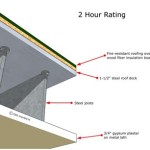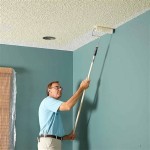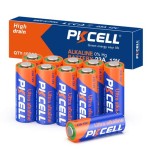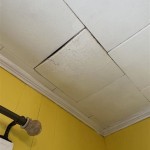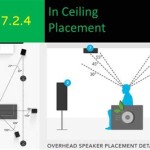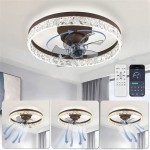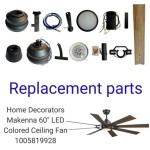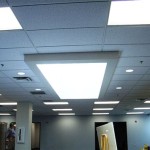Automatic Projector Screen Ceiling Mount: Enhancing Home Theaters and Presentation Spaces
The integration of technology into modern homes and offices continues to evolve, with enhanced audio-visual (AV) systems becoming increasingly common. Projector screens, essential components of these systems, offer a large-format viewing experience ideal for home theaters, conference rooms, classrooms, and various other settings. While traditional wall-mounted or manually operated screens remain viable options, automatic projector screen ceiling mounts present a sophisticated and convenient alternative. These motorized systems provide seamless integration, space optimization, and enhanced aesthetic appeal, making them a preferred choice for discerning users.
An automatic projector screen ceiling mount, as the name suggests, is a motorized mechanism designed to conceal and deploy a projector screen from within a ceiling cavity. When not in use, the screen retracts into the mount, effectively disappearing from view and preserving the clean lines of the room. Upon activation, typically via a remote control or integrated control system, the screen smoothly descends, ready for projection. This functionality provides a significant advantage over permanently exposed screens, which can detract from the room's decor when not in use. The core components of a typical automatic projector screen ceiling mount include the motor, the screen roller mechanism, the screen fabric, the housing, and the control system. Each of these components plays a crucial role in ensuring reliable and optimal performance.
The motor is the driving force behind the entire system. It is responsible for rotating the screen roller mechanism, which in turn extends or retracts the screen. The motor's quality and power directly influence the smoothness and speed of the screen's deployment and retraction. High-quality motors are generally quieter and more durable. The screen roller mechanism consists of a cylindrical tube around which the screen fabric is wound. The design and precision of this mechanism are critical for ensuring the screen deploys evenly and without wrinkles or creases. The screen fabric itself is a specialized material designed to optimize image quality and viewing experience. Different fabrics offer varying levels of gain, contrast, and viewing angle. The housing is the enclosure that conceals the screen and mechanism within the ceiling. It is typically made of metal or durable plastic and is designed to blend seamlessly with the surrounding ceiling. Finally, the control system allows users to operate the screen remotely, often through a wireless remote, a wall-mounted switch, or integration with a smart home system.
Key Benefits of Automatic Projector Screen Ceiling Mounts
Automatic projector screen ceiling mounts offer a multitude of benefits that contribute to a superior viewing experience and enhanced room functionality. These advantages range from space optimization and aesthetic appeal to ease of use and long-term value.
One of the most significant advantages is space optimization. In smaller rooms or multi-purpose spaces, a permanently exposed screen can be intrusive and limit the room's flexibility. An automatic ceiling mount allows the screen to be hidden when not needed, freeing up valuable wall space and creating a more open and adaptable environment. This is particularly beneficial in living rooms, home offices, and classrooms where the room's function needs to change frequently.
Furthermore, automatic screens contribute significantly to the aesthetic appeal of a room. By concealing the screen within the ceiling, the mount creates a clean and uncluttered look. This seamless integration enhances the overall design and prevents the screen from becoming a visual distraction when not in use. The sleek and modern appearance of automatic screens is especially appealing to homeowners and businesses seeking a sophisticated and professional AV solution.
Beyond aesthetics and space, automatic projector screens offer unparalleled ease of use. With the touch of a button, the screen can be deployed or retracted, eliminating the need for manual operation. This convenience is particularly valuable in situations where quick setup and takedown are required, such as presentations or impromptu movie nights. The integration with remote controls and smart home systems further simplifies operation and allows for seamless integration with other AV equipment.
Factors to Consider When Choosing an Automatic Projector Screen Ceiling Mount
Selecting the right automatic projector screen ceiling mount requires careful consideration of several factors. These factors include screen size and aspect ratio, screen material, motor type and control options, installation requirements, and budget. A thorough assessment of these aspects will ensure that the chosen mount meets the specific needs of the user and the characteristics of the installation environment.
The first and perhaps most crucial factor is the screen size and aspect ratio. The screen size should be determined based on the room's dimensions, the projector's throw distance, and the desired viewing distance. A screen that is too small will diminish the immersive experience, while a screen that is too large may cause eye strain. The aspect ratio, which refers to the screen's width-to-height ratio, should match the native aspect ratio of the projector to avoid image distortion. Common aspect ratios include 16:9 (widescreen), 4:3 (standard), and 2.35:1 (cinemascope).
The screen material is another critical factor that affects image quality and viewing experience. Different materials offer varying levels of reflectivity, contrast, and viewing angle. Matte white screens are a versatile option that works well in most environments. Gray screens enhance black levels and contrast in rooms with ambient light. High-gain screens provide a brighter image but may have a narrower viewing angle. The choice of material should be based on the room's lighting conditions and the desired image characteristics.
The motor type and control options are also important considerations. Motors vary in terms of power, noise level, and reliability. High-quality motors provide smooth and quiet operation. Control options include wireless remote controls, wall-mounted switches, and integration with smart home systems. The chosen control option should be convenient and compatible with the existing AV infrastructure.
Installation requirements should be carefully evaluated before purchasing an automatic projector screen ceiling mount. The ceiling structure must be strong enough to support the weight of the screen and mount. Electrical wiring must be available to power the motor. The installation process may require professional assistance, especially in complex installations or when dealing with ceiling cavities. It is imperative to measure the available space in the ceiling plenum to choose a retractable screen that fits. This is especially important for remodels where space may be restricted by pre-existing infrastructure.
Finally, budget is always a consideration. Automatic projector screen ceiling mounts range in price depending on the size, features, and quality of the components. It is important to balance cost with performance and choose a mount that offers the best value for the intended application. Exploring different brands and models, comparing specifications, and reading customer reviews can help in making an informed decision.
Installation and Maintenance of Automatic Projector Screen Ceiling Mounts
Proper installation and regular maintenance are crucial for ensuring the longevity and optimal performance of automatic projector screen ceiling mounts. A professionally installed system will operate smoothly and reliably for years to come, while routine maintenance will prevent malfunctions and extend the screen's lifespan.
The installation process typically involves several steps, including preparing the ceiling, mounting the housing, connecting the wiring, and adjusting the screen. Preparing the ceiling involves cutting an opening in the ceiling to accommodate the housing and ensuring that the structure is strong enough to support the weight of the unit. The housing is then securely mounted to the ceiling using appropriate hardware. Electrical wiring is connected to the motor, ensuring that the system is properly grounded and protected. Finally, the screen is carefully deployed and adjusted to ensure that it is level and free of wrinkles or creases. It is essential to follow the manufacturer's instructions carefully and seek professional assistance if needed. A professional installer will have the experience and expertise to ensure that the installation is done correctly and safely.
Regular maintenance is relatively simple and primarily involves cleaning and inspecting the screen and mechanism. The screen should be cleaned periodically with a soft, damp cloth to remove dust and dirt. Avoid using harsh chemicals or abrasive cleaners, as these can damage the screen material. The mechanism should be inspected regularly for any signs of wear or damage. Lubricating the moving parts can help to maintain smooth operation. If any problems are detected, such as a noisy motor or a screen that is not deploying properly, it is important to address them promptly to prevent further damage.
In conclusion, automatic projector screen ceiling mounts offer a sophisticated and convenient solution for enhancing home theaters, conference rooms, and other AV environments. By providing seamless integration, space optimization, and ease of use, these motorized systems elevate the viewing experience and contribute to the overall aesthetic appeal of the room. Selecting the right mount, ensuring proper installation, and performing regular maintenance are crucial for realizing the full potential of this technology. The increased initial investment offers considerable long-term benefits.

Vividstorm Pro Slimline Motorized Tension Ust Alr Projector Screen Nothingprojector

Dminteract 100inch 16 9 4k Electric Tensioned In Ceiling Projector Screen

Vividstorm Pro A Slimline Motorised Drop Down Projector Screen For Ceiling Mounted Ust Laser Projectors Official Site

Vividstorm Pro Slimline Motorized Tension Ust Alr Projector Screen Nothingprojector

In Ceiling Tab Tensioned 120 Inch Odisha

Ceiling Wall Mount Motorized Tab Tensioned Projection Screen Electric Projector Made In Com

Home Cinema Recessed In Ceiling Aluminium Alloy Motorized Tab Tension Projector Screen Mounted Electric Movie Screens Made Com

Bundle Recessed In Ceiling Ust Projector Case Motorized Drop Down Clr Alr Screen Package Deal Vividstorm Official Site

300 Electric Projector Screen Wall Ceiling Mounted Motorized Projection With Remote Control

Vividstorm Pro Slimline Motorized Tension Ust Alr Projector Screen Nothingprojector
See Also

